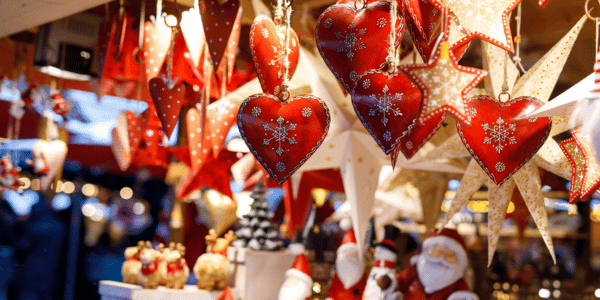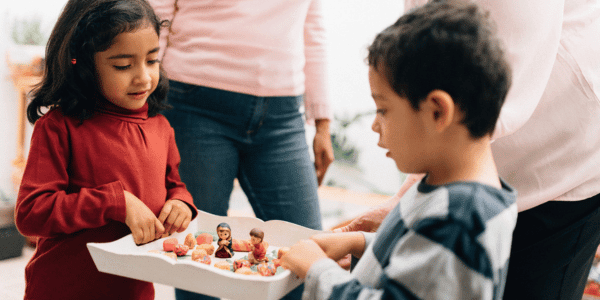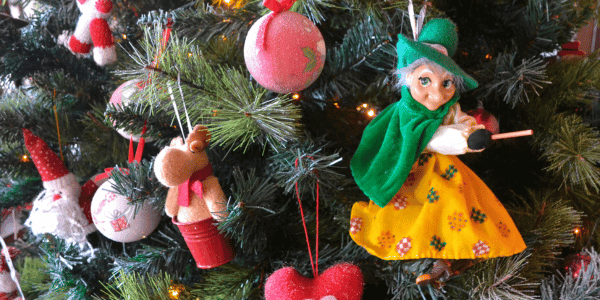8 Holiday Traditions From Around the World That Will Surprise You

The sights, smells, and sounds of the holiday season offer a special kind of magic. But as we’re cozying up with eggnog and decorating our Christmas trees, people around the world are celebrating their own time-honored traditions. From the fiery Junkanoo in the Bahamas to the mysterious Krampus in Austria, we’ll take you on a global journey to explore eight unique worldwide holiday traditions. Rooted in history, these festive customs and age-old celebrations not only brighten the winter season but also give a glimpse into the rich cultural heritage that shapes the way people celebrate today. Let's dive in!
Winter Solstice — U.K.
The Winter Solstice is a celebration of the shortest day and longest night of the year. In the U.K., ancient Celtic traditions surrounding the solstice are still very much alive. The Celts believed the solstice indicated the sun's rebirth, and they marked the day with huge bonfires to light the darkness and encourage the sun’s return. In modern times, the tradition of lighting Yule logs and gathering around bonfires continues in Scotland and other parts of the U.K., where people celebrate the coming of the new year in late December with warmth and light. It’s a nod to both the harshness of winter and the promise of spring.
Las Posadas — Mexico
Las Posadas is one of the most heartwarming holiday traditions in Mexico, and it honors the journey of Mary and Joseph as they searched for shelter in Bethlehem. For nine nights, from December 16 to December 24, families participate in a procession, visiting homes in their community, singing carols, and asking for shelter. The tradition reenacts the hardship faced by Mary and Joseph, but it always ends with a warm welcome and lively party. On the final night, the "innkeepers" open their doors, and the group is invited inside to feast, break piñatas, and enjoy the company of friends and family. It’s a beautiful reminder of hospitality, community, and the spirit of giving.
Dongzhi Festival — China
Though most people associate Chinese New Year with the lunar calendar's start, the Dongzhi Festival, recognized on the Winter Solstice, holds just as much significance. This ancient festival has been celebrated for over 2,000 years and indicates the beginning of longer days. Families unite to share a meal of tangyuan—sweet rice balls—which symbolize family harmony. The festival centers on balance, as it commemorates the return of the sun and the value of family ties.
Junkanoo — The Bahamas
Junkanoo is the Bahamas’ most beloved holiday tradition and dates back to the 18th century. The festival has its roots in African and Caribbean culture, where enslaved people would celebrate Christmas with music, dancing, and exuberant parades in the streets. The name "Junkanoo" is believed to have originated from a corrupt version of "John Canoe," a name given to a West African king. Today, Junkanoo is a vibrant fete that takes place on Boxing Day and New Year’s Day, with large, colorful parades and elaborate costumes, masks, and energetic drumming. The tradition honors the resilience of the Bahamian people and continues to bring communities together in merriment and joy.
St. Lucia’s Day — Sweden
St. Lucia’s Day on December 13 marks the beginning of the Christmas season in Sweden. The holiday traces its origins to an early Christian martyr, St. Lucia, who brought food to persecuted Christians wearing a crown of candles. Her story became a symbol of light and hope in the darkest days of winter. Today, Swedish families celebrate Lucia by having the eldest daughter dress in white robes with a crown of candles, leading a procession of children who sing traditional Christmas carols. The practice brings warmth to the long, cold Swedish winters and reminds everyone of the light that can be found even in the darkest of times.
Krampus — Austria
In Austria and parts of Central Europe, the legend of Krampus is as much a part of holiday tradition as Santa Claus. This fearsome creature—half goat, half demon—has ties to pre-Christian Alpine traditions. In the 16th century, Krampus was introduced into Christian culture as a counterpart to St. Nicholas. While St. Nicholas rewards good children with gifts, Krampus is said to punish and scare the misbehaved. Krampusnacht, or Krampus Night, celebrated on December 5, features terrifying parades where people dress as Krampus, clanging cowbells and chains. This eerie tradition serves as a warning to children to be on their best behavior!
Ded Moroz — Russia
In Russia, the New Year holiday is observed with the arrival of Ded Moroz (Grandfather Frost), a figure who closely resembles Santa Claus but with some key differences. While Santa delivers gifts at Christmas, Ded Moroz brings gifts on New Year’s Eve, often accompanied by his granddaughter, Snegurochka, or the Snow Maiden. Their visit is a highlight of the Russian holiday season, where families celebrate with feasts, music, and fireworks. Ded Moroz's origins are from Slavic folklore, where he was believed to be a winter spirit, bringing both the bitter cold and the hope for renewal. Today, Ded Moroz remains a central figure in Russian holiday celebrations, symbolizing the joys and challenges of winter.
Flying Witches — Italy
In Italy, and also in parts of Norway, the holiday season includes a unique figure: La Befana, the flying witch. Legend has it that La Befana was asked by the Three Wise Men to join them in their search for the Baby Jesus but declined, later regretting it. Now, she flies on her broomstick every year on the night of January 5, delivering gifts to children. She’s similar to Santa Claus but with a bit more magic—and a lot more broomstick action! In Italy, children hang stockings for La Befana, and she fills them with sweets for the good ones and coal for the naughty ones. This tradition dates back to pre-Christian times and has become a cherished part of Italian holiday culture.
Beyond Holiday Traditions Around the World
Holiday traditions worldwide offer a wealth of history, meaning, and joy. Whether they’re ancient customs or have evolved over centuries, these celebrations share the importance of community, family, and light during the year's darkest days.
Looking for more festive inspiration? Check out how to keep the holiday spirit going well through January!

